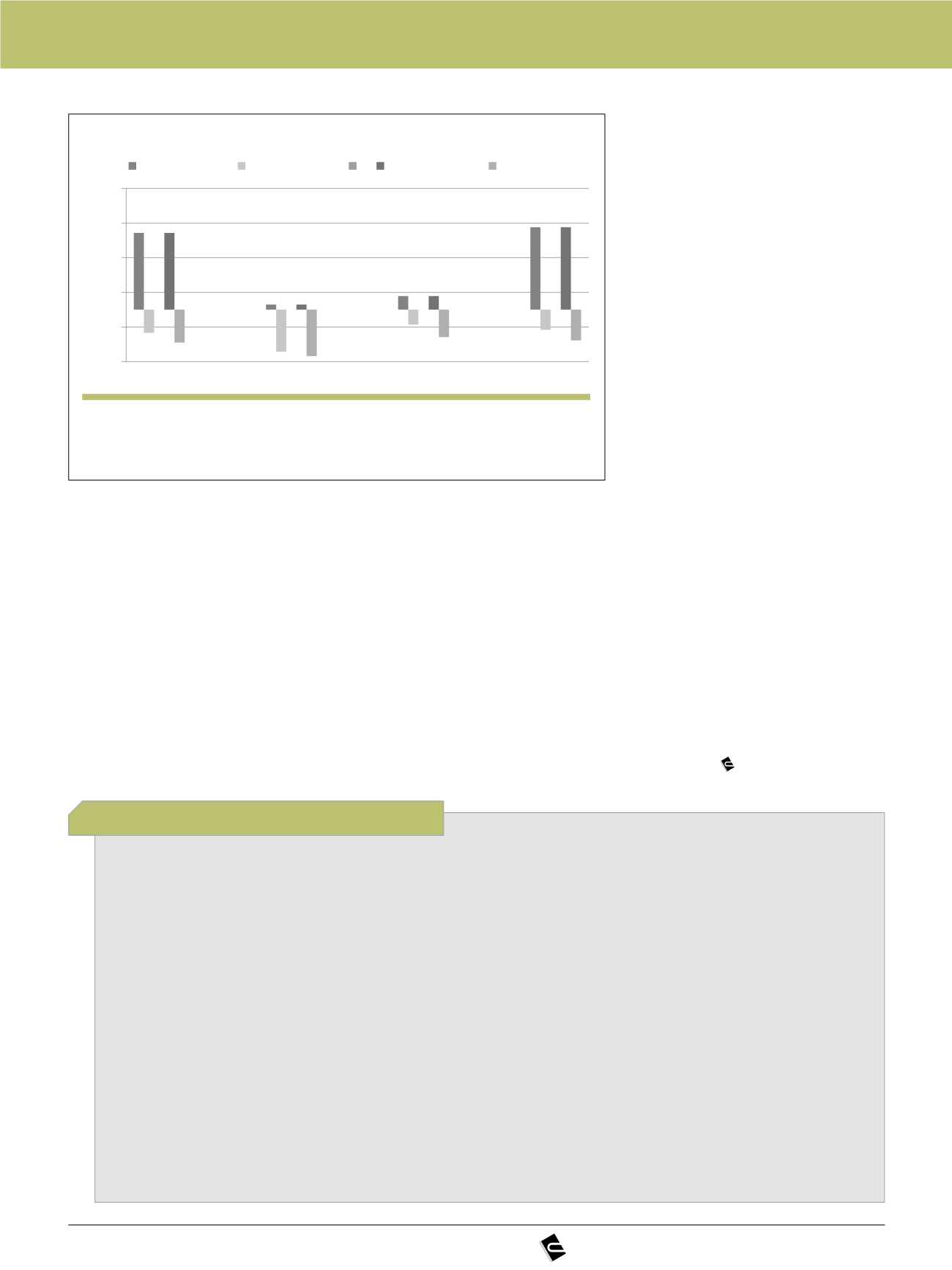
CONCRETO & Construções | Ed. 91 | Jul – Set • 2018 | 101
u
Figure 6
Reliability index
β
for the minimum and maximum values of the carbonation rate
of the concretes ranked in figure 3 for nominal service life of 50 and 100 years
-3
-1
1
3
5
7
Beta value
XC1 XC2 XC3 XC4
Exposure class XC
Beta 50 y mim Beta, 50 y max
beta 100 y min beta 100 y max
meantime that this limiting value is
rationally selected, it can be taken
as an reference the deterministic
value (the mean one), which
corresponds to a failure probability
of 50% (
β
=0).
5. CONCLUSIONS
The main conclusions drawn up
from present paper are:
u
The failure (steel depassivation)
probability of standard concretes
may vary with respect to
carbonation within those fulfilling
the prescriptive rules of the mix
proportioning for each exposure
class. This also happens with the
mechanical strength.
u
In the case of the strength a
limiting value for exposure class
is established which is not still
agreed with statistical significance
for the carbonation rates or other
concrete properties.
u
In the case of the carbonation
rate, the failure probability
depends on the cover depth
as indicated in the limit state
function (Eq. 1).
u
Providing that this limiting value of
the carbonation rate should take
into account the importance of the
structure and the consequences
of failure, a fixed value seems
not logical. In the meantime a
more statistically based value
is decided for standards, the
deterministic, mean value (
β
=0)
can be a starting point.
6. ACKNOWLEDGEMENTS
The authors thank to CALIDUR
project for providing the experimental
data, in particular to Renata
D’Andrea. They are also grateful the
funding from the Technical Building
Code of Spain. Finally, they also
thank to the members of the fib
Commission 8 TG8.3 for the fruitful
discussions.
[1] Papadakis, V.G., Vayenas, C.G., Fardis, M.N., Fundamental modeling and experimental investigation of concrete carbonation, ACI Mater J 88 (1991), 363–373
[2] Parrott, L.J., Study of carbonation-induced corrosion. Mag Concr Res, 46(166) (1994), 23-28
[3] Parrott, L.J., Damage caused by carbonation of reinforced concrete. Mater Struct, 23(3) (1990), 230-234
[4] Sanjuán, M.A., Andrade, C., Cheyrezy, M., Concrete carbonation tests in natural and accelerated conditions, Adv Cem Res 15(4) (2003), 171-180
[5] CEB-FIP, The fib Model Code for Concrete Structures 2010, Ernst and Sohn, Germany (2012)
[6] EHE-08, Spanish Code for calculation of Structural concrete, Royal Decree 1247/2008, Ministerio de Fomento, Spain (2008)
[7] EN 1992-1-1, Eurocode 2; Design of concrete structures Part 1-1: General rules and rules for buildings, European Committee for Standardization, CEN,
Belgium (2010)
[8] The fib (International Federation for Structural Concrete), TG 5.6, Model Code for Service Life Design, bulletin 34, Lausanne, Switzerland (2006)
[9] EN 206-1+A1, Concrete - Part 1: Specification, performance, production and conformity, European Committee for Standardization, CEN, Belgium (2016)
[10] Gonzalez, J.A., Algaba, S., Andrade, C., Corrosion of reinforcing bars in carbonated concrete, Brit Corr J, 15(3) (1980) 135-139
[11] EN 12390-3, Testing hardened concrete. Part 3: Compressive strength of test specimens, European Committee for Standardization, CEN, Belgium (2009)
[12] CEN/TS 123903-10, Testing hardened concrete – Part 10: Determination of the relative carbonation resistance of the concrete, European Committee for
Standardization, CEN, Belgium (2010)
[13] UNE 83988-1, Durabilidad del hormigón. Métodos de ensayo. Determinación de la resistividad eléctrica. Parte 1: Método directo (método de referencia),Asociación
Española de Normalización, UNE, Spain (2008)
[14] UNE 83988-2, Durabilidad del hormigón. Métodos de ensayo. Determinación de la resistividad eléctrica. Parte 2: Método de las cuatro puntas o de Wenner,
Asociación Española de Normalización, UNE, Spain (2014)
u
R E F E R Ê N C I A S B I B L I O G R Á F I C A S


